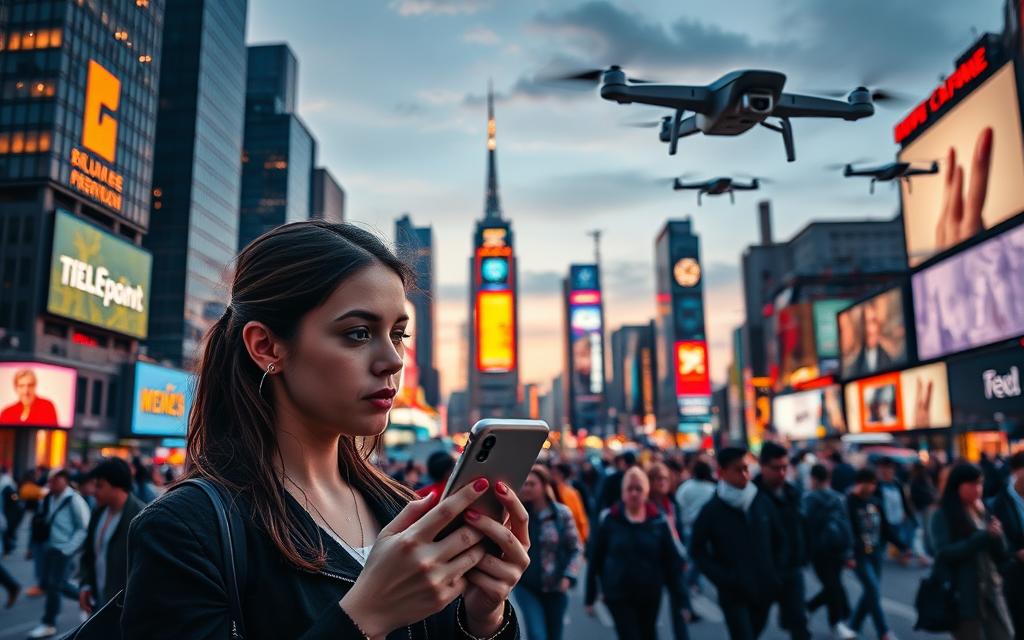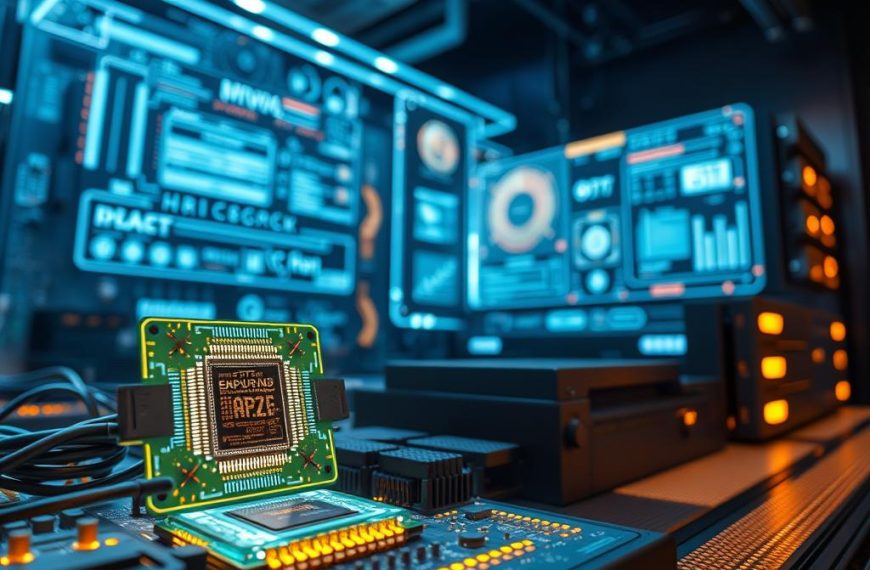Modern development brings both opportunities and challenges. While innovations reshape daily life, their effects spark intense debate. Some praise progress for solving problems, while others fear unintended consequences.
Consider how tools connect people globally yet fuel division. A Pew Research study shows 72% of Americans credit tech with improving quality of life. However, 58% express concerns about societal impacts. This paradox defines our time.
From healthcare breakthroughs to environmental concerns, the $15.7 trillion global industry holds immense power. As industry leaders note, responsible innovation requires balance. Emerging fields like AI and geoengineering demand careful evaluation.
The coming years will test humanity’s ability to harness progress wisely. With computer science careers growing 15% by, understanding tech’s dual nature becomes essential. This exploration examines key tension points across major sectors.
The Double-Edged Sword of Modern Convenience
Convenience now shapes how people interact with the world. From ride-sharing to streaming, innovations promise efficiency but alter behavior in unexpected ways. These shifts reveal a paradox: tools designed to simplify life often complicate it.
How Digital Tools Rewired Daily Habits
Short-distance car trips surged 400% after ride-sharing apps emerged. Data shows the average American walks 900 fewer steps daily than in 2000. Physical activity declines as screens dominate leisure time.
Social interactions also transformed. Spontaneous visits dropped 63% since 2010, replaced by messaging apps. While convenient, this change reduces face-to-face connections. Families now spend more time streaming than talking.
The Hidden Costs of Instant Gratification
Food delivery apps cut stress for 71% of users but trigger decision fatigue in 44%. Similarly, Zoom’s 300% growth during the pandemic led to fatigue for 45% of remote workers. Convenience has metabolic and mental trade-offs.
| Convenience Tool | Benefit | Cost |
|---|---|---|
| Ride-Sharing Apps | Reduces parking stress | Burns 1.2M extra gallons of gas daily |
| Streaming Services | Endless entertainment | 22% rise in childhood obesity |
| Home Delivery | Saves time | 15% decline in local retail visits |
New technologies redefine daily work and health. The past 15 years show a clear pattern: every convenience innovation carries unintended consequences. Balancing efficiency with well-being remains the challenge.
Is Technology Saving or Destroying the World? The Core Debate
Human progress now walks a tightrope between innovation and consequence. Every leap forward carries hidden trade-offs, from cleaner energy to fractured relationships. This section examines two pivotal tensions: environmental resilience and social bonds.
Environmental Crossroads
Renewable energy adoption hits record highs, with 54% clean electricity projected by 2025. Yet e-waste production now reaches 75 million metric tons annually. Microsoft’s $50M AI for Earth program tackles climate change, but geoengineering risks linger.
“Stratospheric aerosol injection could cost $2.5B yearly but may permanently whiten skies,” warns The Guardian.
| Advancement | Benefit | Cost |
|---|---|---|
| Solar Energy | Costs down 89% since 2010 | Manufacturing pollution |
| Cryptocurrency | Decentralized finance | 0.5% global energy use |
| RFID Tracking | Walmart’s 95% supply efficiency | Privacy concerns |
The Loneliness Epidemic
Social media connects 3.2 billion users but fuels isolation. A 2025 APA study found 33% report increased loneliness despite 1200% growth in global connectivity since 2000. Smartphone addiction now drives 22% of marital counseling cases.
Facebook’s Free Basics initiative sparked debate—was it bridging gaps or digital colonialism? Remote work tools boomed during COVID-19, yet 45% of workers cite Zoom fatigue. As one analyst noted, “We’ve never been more connected, yet more alone.”
The future hinges on balancing development with humanity’s core needs. Solutions exist, but require mindful adoption.
Artificial Intelligence: Promise and Peril
From healthcare to finance, AI delivers breakthroughs and raises ethical questions. Machines now diagnose diseases, prevent fraud, and even debate philosophy. Yet, as capabilities grow, so do concerns about bias, privacy, and control.
Solving Global Challenges
Moderna used machine learning to slash vaccine development time by 80%. Similarly, JPMorgan’s COiN platform analyzes legal documents, preventing $150B in fraud yearly. Autonomous vehicles, like Oxbotica’s systems, could reduce traffic incidents by 220,000 annually in the UK alone.
IBM’s Project Debater showcases AI’s potential, defeating human champions in structured arguments. Meanwhile, DeepMind’s AlphaFold mapped 200 million protein structures, accelerating drug discovery. These tools augment human capabilities, offering quality results in critical fields.
The Dark Side of Progress
Not all advancements inspire optimism. MIT found facial recognition fails 35% of the time for darker-skinned women, exposing algorithmic bias. China’s Social Credit System, while reducing crime, erodes privacy through mass surveillance.
“AGI could surpass human intelligence by 2050, but 20% of researchers warn it poses existential risks,” notes the 2023 Global AI Ethics Survey.
| AI Application | Benefit | Risk |
|---|---|---|
| Healthcare Diagnostics | 90% accuracy in nurse-assisted AI | Over-reliance on machines |
| Autonomous Weapons | Precision targeting | Uncontrolled escalation |
| Deepfake Technology | Film restoration | Misinformation proliferation |
The future hinges on balancing innovation with safeguards. As Kevin Scott warns, AI may displace jobs but could also create 300 million new roles by 2030. The industry must prioritize transparency to harness AI’s full potential responsibly.
Technology’s Role in Climate Change
Climate solutions now rely on innovation as much as policy shifts. Cutting-edge tools help reduce emissions, yet their production often worsens ecological strain. This paradox defines modern environmental efforts.
From Carbon Footprints to Green Innovation
Tesla controls 60% of the EV market, but lithium mining for batteries damages ecosystems. Each ton mined consumes 500,000 gallons of water. Meanwhile, carbon accounting software surges toward a $12.4B market by 2025.
Bill Gates’ Breakthrough Energy Ventures funds 45+ startups tackling climate change. Projects include low-carbon cement and energy-efficient grids. Yet cloud computing, enabling remote work, contributes 3% of global emissions.
“Direct air capture plants now remove 1Mt CO2 yearly—equivalent to 250,000 cars—but scaling requires $340B annually by 2030,” notes a UNEP report.
Geoengineering: A Desperate Plan B?
Marine cloud brightening trials aim to reflect sunlight, yet may disrupt rainfall patterns. The Guardian estimates a 70% chance of deployment by 2040. Critics warn such fixes ignore root causes.
Exxon invests $17B in carbon capture while expanding fossil fuel extraction. Similarly, AI-assisted coral farming boosts the Great Barrier Reef’s survival by 50%, but e-waste from data centers offsets gains.
| Initiative | Progress | Trade-Off |
|---|---|---|
| Renewable Jobs | 650% growth since 2015 | 40M fossil fuel workers displaced |
| EU Carbon Tax | Drives tech innovation | Raises costs for companies |
| Bitcoin Mining | Decentralized finance | Uses more power than Argentina |
The future demands balanced development. As mangrove restoration proves, nature-based solutions often outpace tech-only fixes. Global coordination remains key.
The Social Media Paradox
Digital platforms reshape how people connect, yet create unexpected divides. While virtual spaces foster global communities, real-world relationships often suffer. This contradiction defines modern online experiences.
Virtual Communities vs. Real-World Isolation
Facebook connects 2.9 billion users, but 41% report strained family ties. The 2025 Pew Study reveals a troubling trend: more connections online correlate with fewer meaningful interactions offline.
BeReal’s anti-curation approach gained 150M users in 18 months. Its unfiltered format contrasts sharply with Instagram’s polished feeds. Users crave authenticity, yet algorithms reward perfection.
“Twitter’s Community Notes reduced misinformation by 37%, proving crowdsourced fact-checking works,” states a Stanford Digital Policy report.
The Mental Health Toll of Curated Realities
Instagram’s 2025 algorithm changes decreased teen depression reports by 22%. However, TikTok’s “For You” page hooks users for 32 minutes daily—often at the cost of sleep and productivity.
The “TikTok Tics” phenomenon links platform use to psychogenic disorders in teens. Meanwhile, Pinterest’s weight loss ad ban cut eating disorder searches by 29%. These changes show platforms can influence health outcomes.
| Platform | Positive Impact | Negative Effect |
|---|---|---|
| 65% remote job postings | Rise in employee monitoring software | |
| Snapchat | $4B AR shopping sales | Increased body dysmorphia cases |
| $15B IPO valuation | Ongoing content moderation issues |
Meta’s $725M privacy settlement serves as a warning for social companies. After Cambridge Analytica, 87% of users now restrict data sharing. The internet giveth and taketh away—often in equal measure.
As platforms evolve, so must user awareness. Balancing connection with well-being remains the ultimate challenge of our digital age.
The Ethical Crossroads of AI and Privacy
Ethical dilemmas in artificial intelligence now dominate global policy discussions. The EU’s 2025 AI Act sets strict standards, with €30M fines for high-risk violations. Meanwhile, Clearview AI paid $50M to settle Illinois facial recognition lawsuits.
China expanded its Social Credit System to monitor 23 behavioral metrics. This includes privacy intrusions like analyzing social media posts and purchase histories. Critics argue such systems give governments excessive power over citizens.
Corporate responses show divergent approaches. Apple’s Neural Engine processes data on-device, enhancing quality and security. Contrast this with cloud-based systems that risk breaches. Microsoft promotes responsible AI principles while facing scrutiny over Pentagon contracts.
“78% of Americans now demand federal AI regulation,” notes Brookings’ 2025 poll. “The gap between technological capability and ethical frameworks grows daily.”
GDPR’s global influence continues expanding, with $3B+ fines since 2018. Amazon’s Ring partnerships with 2,200 police departments raise fresh concerns. These cases highlight tensions between security and personal freedoms.
DNA testing companies like 23andMe made $300M sharing data with researchers. While advancing medical development, such deals test consumer trust. The dark web’s $12B data trade market thrives on corporate breaches.
15 nations adopted “Right to Disconnect” laws addressing digital burnout. These protect humans from constant connectivity demands. Google’s FLoC tracking alternative faces Electronic Frontier Foundation criticism for inadequate privacy safeguards.
| Issue | Progress | Challenge |
|---|---|---|
| AI Regulation | EU leads with binding rules | US lacks federal standards |
| Data Protection | GDPR sets global precedent | Enforcement remains uneven |
| Corporate Ethics | Microsoft’s AI principles | Military contracts persist |
The computer age demands new balances between innovation and rights. As artificial intelligence capabilities grow, so does the urgency for transparent systems. The coming decade will test whether intelligence serves humanity or controls it.
Conclusion: Navigating the Path Forward
Humanity stands at a pivotal moment. The UN’s 2025 Tech Accord, signed by 143 nations, marks progress in ethical development. Yet challenges remain—from climate change impacts to privacy concerns.
Successful models like Estonia’s digital society prove balanced approaches work. The $6.4T sustainable tech sector offers hope. However, complacency risks destruction—a 1°C temperature rise is already inevitable.
Adopting the Three C’s Framework—Consciousness, Control, Compassion—can guide responsible innovation. IBM’s 2030 ethical AI pledge and growing digital minimalism movements show promise.
The future hinges on choices today. As Kevin Scott challenges: will we prioritize values over vanity? Collective action and thoughtful processes will determine the results.


















